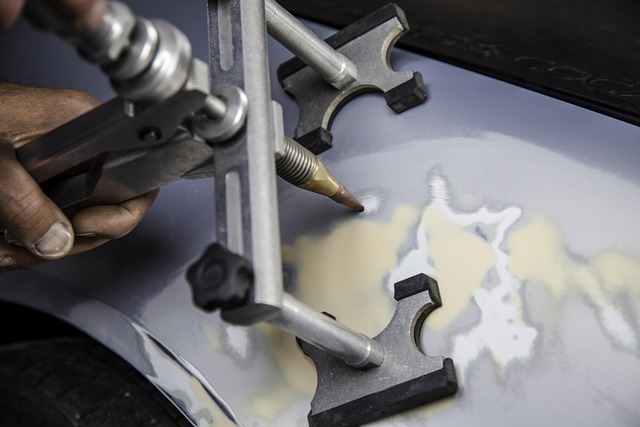Laser Cleaning Tech: From Industrial to Home Workshop Use
Laser cleaning technology has evolved from expensive industrial applications to more accessible handheld devices that promise precision cleaning without chemicals or abrasives. This innovative approach uses focused laser beams to remove rust, paint, coatings, and contaminants from various surfaces, making it an intriguing option for small shops and home users seeking efficient cleaning solutions.

What Is Laser Cleaning and Can It Make Sense for Small Shops?
Laser cleaning utilizes pulsed laser beams to ablate unwanted materials from surfaces through a process called laser ablation. The technology works by delivering short, intense bursts of light energy that vaporize contaminants while leaving the underlying substrate intact. For small shops dealing with restoration work, metal fabrication, or precision cleaning tasks, laser cleaning offers a chemical-free alternative that produces minimal waste.
Small automotive shops, restoration businesses, and artisan workshops are increasingly considering laser cleaning for removing rust from vintage car parts, cleaning delicate historical artifacts, or preparing surfaces for welding. The technology excels at selective cleaning, allowing operators to remove specific layers without damaging the base material.
How Lower-Cost Handheld Laser Cleaners Work and Their Limitations
Handheld laser cleaning devices typically operate at lower power levels than industrial systems, usually ranging from 20 to 200 watts. These units use fiber laser technology to generate focused beams that can be precisely controlled for various cleaning applications. The cleaning process involves adjusting parameters like pulse frequency, power density, and scanning speed to match the specific material and contamination type.
However, these lower-cost units have notable limitations. Their reduced power means slower cleaning speeds compared to industrial systems, making them suitable primarily for small-scale projects. Battery life constraints limit continuous operation time, and the cleaning depth per pass is shallower, requiring multiple treatments for heavy contamination. Additionally, handheld units may struggle with highly reflective surfaces or materials that require significant energy input for effective cleaning.
Why Laser Cleaning Outshines Abrasives and Chemicals
Laser cleaning offers several advantages over traditional methods. Unlike chemical strippers, laser cleaning produces no hazardous waste, eliminates disposal concerns, and doesn’t require ventilation systems for toxic fumes. The precision control allows for selective removal of specific layers, something nearly impossible with chemical treatments that often affect multiple surface layers.
Compared to abrasive methods like sandblasting or grinding, laser cleaning doesn’t alter the surface geometry or create stress patterns in the base material. There’s no consumable media to purchase, store, or dispose of, and the process doesn’t generate dust or debris that requires extensive cleanup. The non-contact nature of laser cleaning also eliminates wear on the cleaning equipment and reduces maintenance requirements.
What You Should Know About Laser Hazards for Non-Professionals
Safety considerations are paramount when using laser cleaning equipment. Even lower-power handheld units pose serious risks, particularly to eyesight. Direct or reflected laser beams can cause permanent retinal damage or blindness in milliseconds. Proper laser safety glasses rated for the specific wavelength are absolutely essential, and these must be worn by anyone in the work area.
Skin exposure can cause burns similar to intense sunlight, while the cleaning process may generate metal fumes or vapors that require adequate ventilation. Fire hazards exist when cleaning flammable materials or coatings. Users should implement lockout procedures to prevent accidental activation and ensure proper training on laser classification systems and safety protocols before operation.
Is the Price Justified? Operating Costs vs Upfront Investment
The financial consideration for laser cleaning involves balancing substantial upfront costs against long-term operational savings. Entry-level handheld laser cleaning systems typically range from $15,000 to $50,000, while more capable units can exceed $100,000. However, operating costs remain relatively low, primarily consisting of electricity consumption and periodic maintenance.
| Equipment Type | Price Range | Power Output | Best Applications |
|---|---|---|---|
| Entry Handheld Units | $15,000-$25,000 | 20-50W | Light rust, small parts |
| Mid-Range Portable | $25,000-$50,000 | 50-100W | Moderate cleaning tasks |
| Professional Handheld | $50,000-$100,000+ | 100-200W+ | Heavy-duty cleaning |
Prices, rates, or cost estimates mentioned in this article are based on the latest available information but may change over time. Independent research is advised before making financial decisions.
Unlike consumable-based methods, laser cleaning doesn’t require ongoing purchases of chemicals, abrasives, or replacement media. The primary operational costs include electricity usage, which is relatively modest, and periodic maintenance such as laser module replacement after thousands of operating hours. For businesses processing sufficient volume, the elimination of consumable costs and waste disposal fees can provide meaningful long-term savings.
The decision becomes more compelling when factoring in improved quality outcomes, reduced rework, and enhanced safety compared to traditional methods. However, the high initial investment typically requires substantial cleaning volume to achieve reasonable payback periods, making careful cost analysis essential for potential buyers.
Laser cleaning technology represents a significant advancement in surface preparation and restoration techniques. While the high upfront costs and safety requirements present barriers to adoption, the precision, environmental benefits, and operational efficiency make it an attractive option for specialized applications. Small shops and serious hobbyists should carefully evaluate their cleaning volume, safety capabilities, and financial resources before investing in this promising but substantial technology upgrade.




